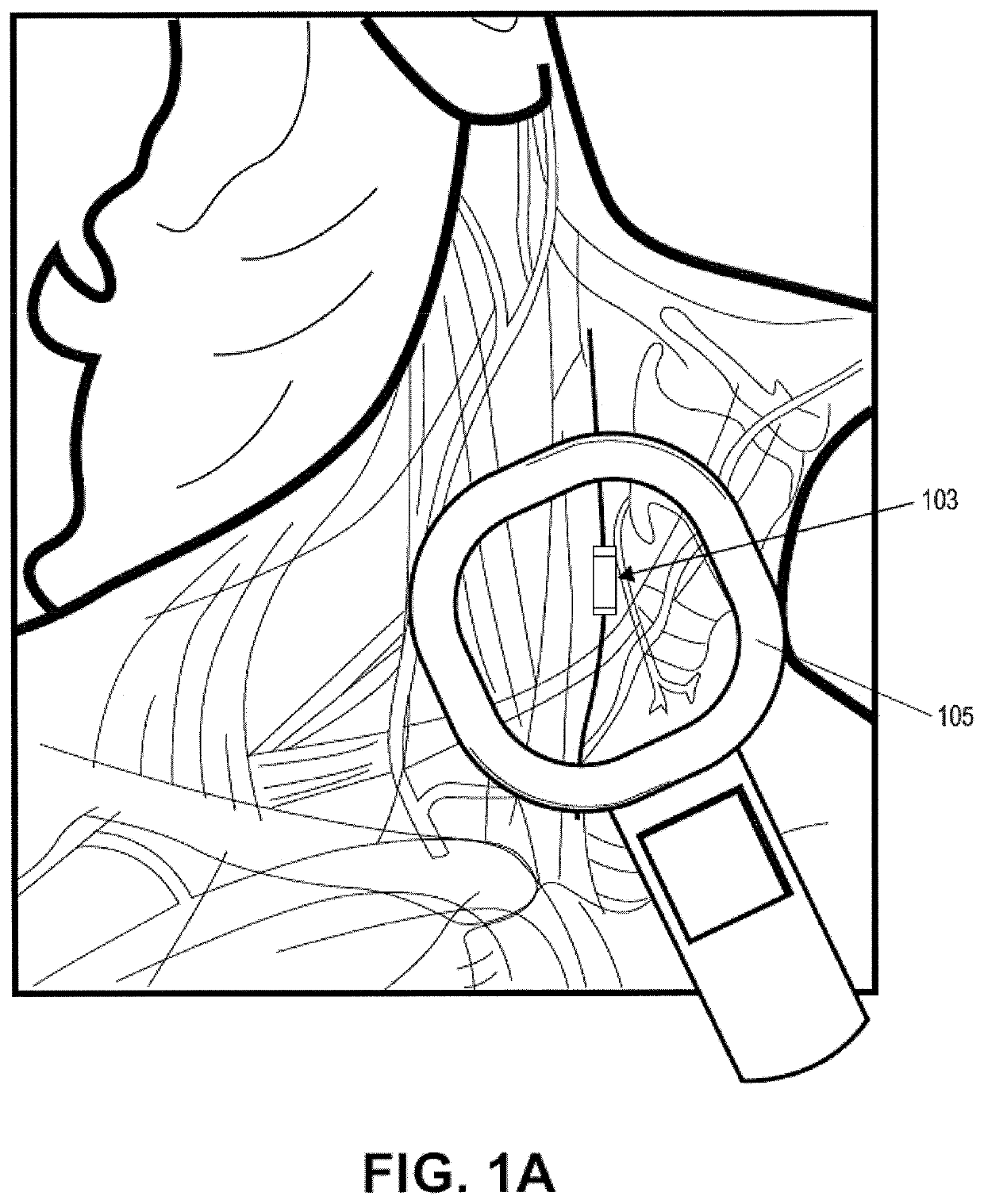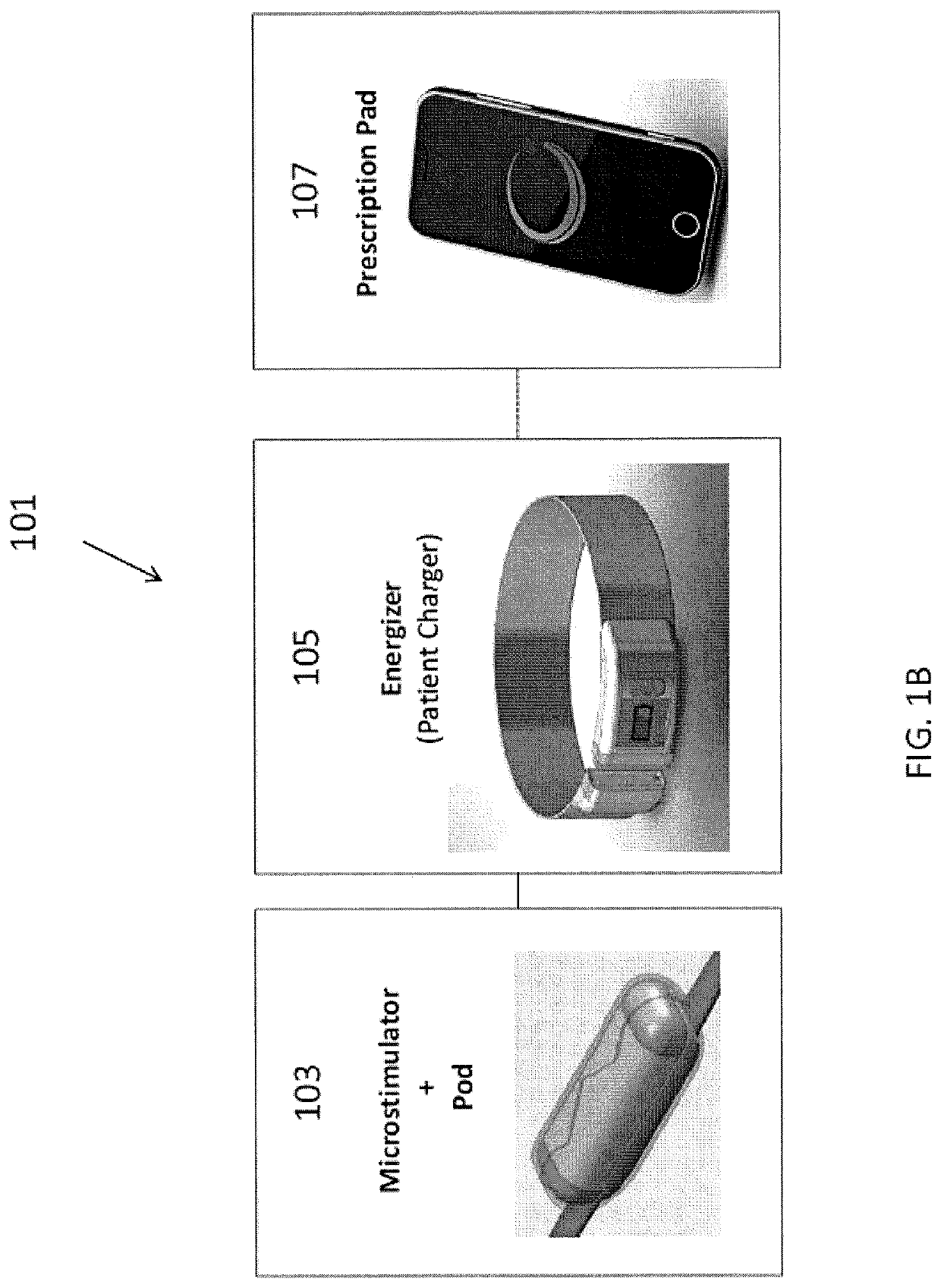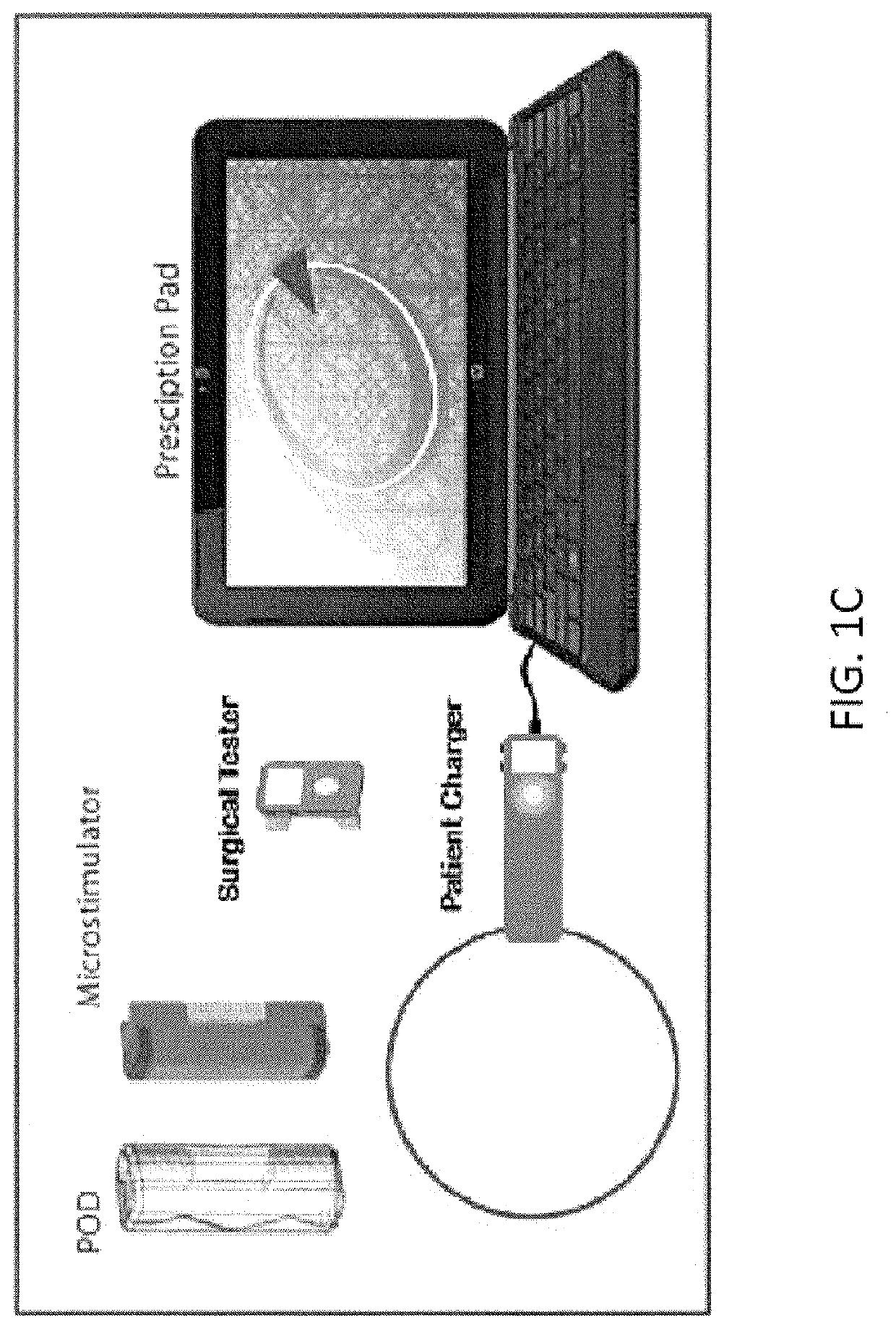Closed-loop vagus nerve stimulation
a vagus nerve and closed-loop technology, applied in the field of chronic inflammation apparatus and methods, can solve the problems of difficult and/or time-consuming system implanting, easy mechanical damage, open-loop devices described to date, etc., and achieve the effect of preventing tachyphylaxis and optimizing stimulus based
- Summary
- Abstract
- Description
- Claims
- Application Information
AI Technical Summary
Benefits of technology
Problems solved by technology
Method used
Image
Examples
example 1
Microstimulator
[0208]In this example, the microstimulator is a rechargeable neural stimulator that attaches to the vagus nerve and delivers current through bipolar platinum contacts against the nerve, as illustrated in FIG. 1B (103). The microstimulator battery may be charged by an external charger (“energizer”) and the energizer also functions as the communication gateway for the external controller (“prescription pad”). The Microstimulator in this example is physically housed in a rigid hermetic capsule with an attached electrode saddle. The hermetic capsule in this example is composed of an Alumina toughened Zirconia tube with metal ends brazed onto the ceramic tube. Brazing joints may use a nickel diffusion process or gold braze. The metal ends are an alloy of Titanium to reduce electrical conductivity and increase braze-ability. As shown in FIG. 23A, within the hermetic capsule is a resonator, hybrid with attached electronic parts, and batteries. The hybrid assembly is suspende...
example 2
Charger
[0295]One variation of a charger (referred to herein as an “energizer”) is described in FIGS. 36-43. In this example, the energizer for powering and programming the microstimulator attaches around the patient's neck like a necklace or collar. FIG. 36A shows one variation of the energizer around the subject's neck. In this example, about an average of 20 seconds of charging will be required per day for NCAP treatment using an implant as described above, and it is recommended that the patient charges at least every week (e.g., for approximately 20*7=3 minutes), even though it is possible not to charge for up to a month requiring a 20-30 minutes to charge.
[0296]In this example, the Energizer consists of 4 components: Coil and Magnetic Coil Connector Assembly, Electronic Module, Battery Module, and Acoustic Module.
[0297]FIG. 37 shows one variation of a coil and magnetic connector assembly. In this example, the Coil is 13 Turns of a bundle of 26 gauge magnet wire (N conductors) sp...
example
[0344]Rats were anesthetized and maintained under anesthesia with isoflurane (1-3%). A bipolar cuff electrode was placed on the left cervical vagus nerve and electrocardiogram (ECG) needle electrodes were placed subcutaneously. An electroneurogram (ENG; 20 kHz, 50,000× gain) was recorded, and an ECG (1.625 kHz, 1000× gain) was recorded with Biopac MP150 running under Acqknowledge v.4. The left vagus nerve was stimulated at 1 mA, 250 μs pulsewidth, 10 Hz for 30 seconds or with a sham stimulation (0 mA). The rats were injected intraperitoneally (IP) with lipopolysaccharide (LPS; 1 mL of a LPS solution at a concentration of 1.5 mg / mL). The data was imported into Labchart v.7 (ADInstrument) for analysis. Spectral analysis (power) of ENG and ECG data between 0-65 Hz was performed.
[0345]FIGS. 51-54I illustrate various ENGs taken of rat vagus nerves and concurrently recorded ECGs. The ENG cover a baseline period before VNS or LPS challenge, a period after VNS, and a period after LPS challe...
PUM
 Login to View More
Login to View More Abstract
Description
Claims
Application Information
 Login to View More
Login to View More - R&D
- Intellectual Property
- Life Sciences
- Materials
- Tech Scout
- Unparalleled Data Quality
- Higher Quality Content
- 60% Fewer Hallucinations
Browse by: Latest US Patents, China's latest patents, Technical Efficacy Thesaurus, Application Domain, Technology Topic, Popular Technical Reports.
© 2025 PatSnap. All rights reserved.Legal|Privacy policy|Modern Slavery Act Transparency Statement|Sitemap|About US| Contact US: help@patsnap.com



